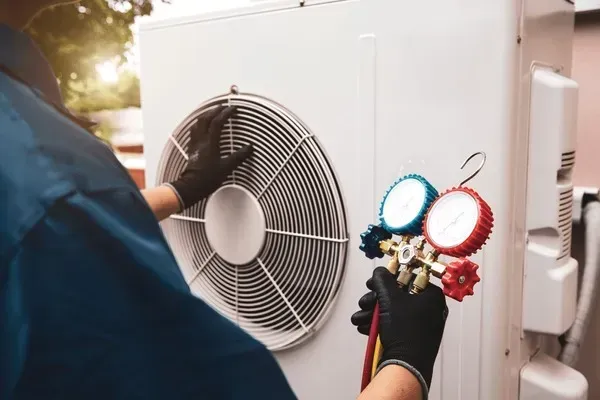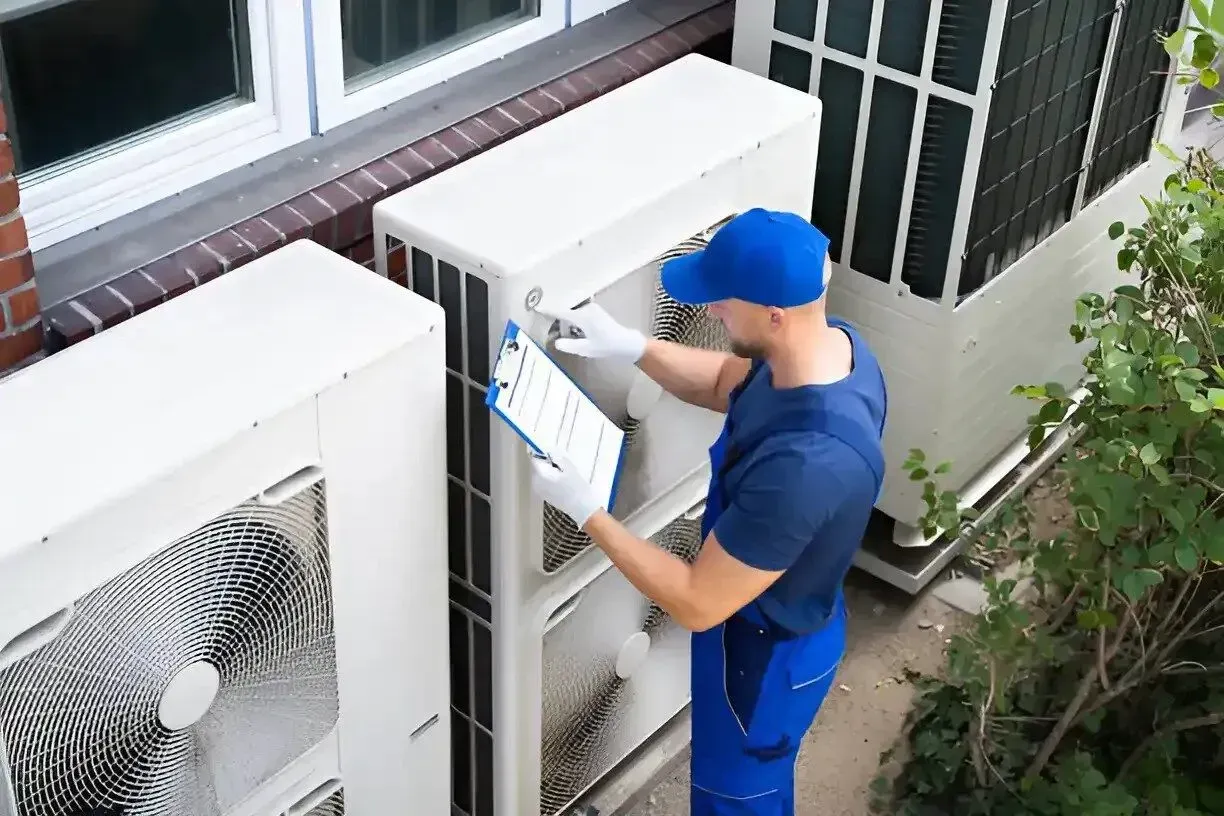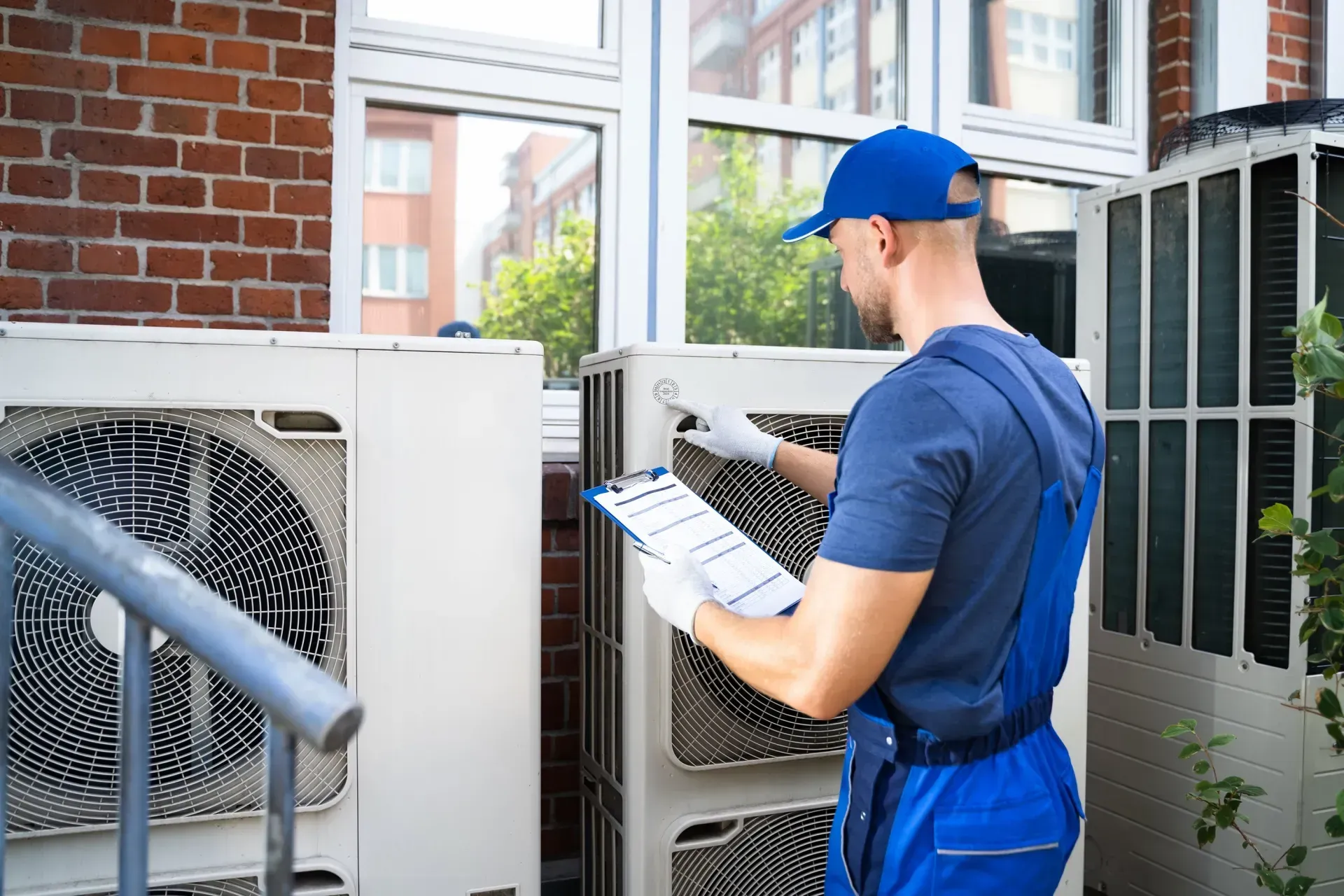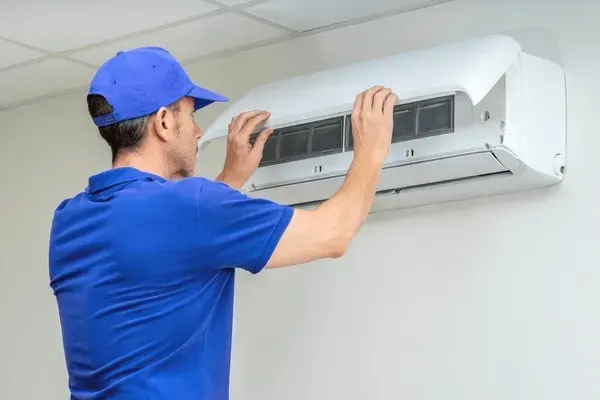Aircon Cleaning Gold Coast
What Is a Split System Air Conditioner? A Complete Guide
If you live on the Gold Coast, you know that an effective air conditioner isn't a luxury, it's an absolute necessity. When you think of air conditioning, the image that most likely comes to mind is a sleek, wall-mounted indoor unit quietly humming away. That device is the most visible part of a split system air conditioner, one of the most popular and energy efficient climate control solutions in Australia. But what is a split system air conditioner and how does it actually work to produce that wonderful cool air?
Understanding the mechanics behind split system air conditioners can help you make better decisions about cooling and heating your home, appreciate the technology, and recognise the importance of regular maintenance. A split system is a sophisticated piece of equipment, and knowing its components and processes is key to maximising its performance and energy efficiency.
This guide will break down everything you need to know about what is a split system air conditioner, from its core components to the refrigeration cycle that keeps you comfortable year-round.
Is Your Split System Underperforming? Book a Professional Clean Today!
Defining a Split System: The Two-Part Solution
The first clue to what is a split system air conditioner is in its name. The air conditioning system is "split" into two main components: an indoor unit and an outdoor unit. These two units work together to move heat from inside your home to the outside, leaving you with refreshing cool air. This is fundamentally different from older window-style air conditioners that house all components in a single box, or from ducted air conditioning systems that hide a central unit in the roof.
The beauty of the split system design is that it separates the noisy parts of the air conditioner (like the compressor) from your living space, ensuring quiet operation inside. Let's look at each part of these popular split systems.
The Key Components of Split System Air Conditioners
Every split system air conditioner consists of the same fundamental parts. The indoor and outdoor units are the stars of the show, connected by a set of pipes and wires that allow them to communicate and transfer energy.
The Indoor Unit
This is the part of the split system air conditioner you see inside your home. Typically, it’s a wall mounted indoor unit, though some split systems can be floor-standing or even concealed in the ceiling. The indoor unit has one primary job: to absorb heat from the room.
Inside this indoor unit, you’ll find:
The Evaporator Coil
This is the most important part of the indoor unit. It's a network of copper tubes that get extremely cold during the cooling mode. A fan blows the warm air from your room over this coil to cool it down.
A Fan
This fan is what circulates the air. It pulls in warm air from the room to be cooled and then blows the resulting cold air back out.
An Air Filter
The indoor unit contains a removable air filter that traps dust, pollen, and other airborne particles from the indoor air. This helps to clean the air but also requires regular cleaning itself to keep the split system running efficiently.
Control Vanes
These are the adjustable louvres on the front of the indoor unit that allow you to direct where the air blown from the system air conditioner goes.
The Outdoor Unit
The outdoor unit is the workhorse of all split system air conditioners. It’s located on an external wall or on the ground outside your home and is responsible for releasing the captured heat.
The outdoor unit contains:
The Compressor
This is the heart of the air conditioner. The outdoor unit's compressor pumps the refrigerant through the system. It's the noisiest component, which is why placing it outside is a major benefit of split system air conditioning.
The Condenser Coil
Similar in appearance to the evaporator coil, the condenser coil’s job is to facilitate heat release. The hot refrigerant flows through this coil, and a fan helps dissipate the heat into the outside air.
A Fan
This fan pulls outside air over the condenser coil to help cool the refrigerant inside.
The Connecting Pipes and Wires
The indoor and outdoor units are connected by a small bundle of copper pipes and electrical wiring.
Refrigerant Piping
These copper tubes carry the refrigerant between the indoor and outdoor units, allowing it to absorb heat inside and release it outside.
Electrical Wires
The electrical wiring provides power to both units and allows the indoor thermostat to communicate with the entire system air conditioner.
How a Split System Air Conditioner Works: The Cooling Cycle Explained
Now that you know the parts, let's explore what is a split system air conditioner doing to cool your room. The process is a continuous loop called the refrigeration cycle.
Absorbing Heat Indoors
The indoor unit turns on, and its fan starts drawing warm air from the single room. This air passes over the freezing-cold evaporator coil. The heat energy in the air is absorbed by the extremely cold refrigerant inside the coil. As the heat is removed, the air becomes cool.
Delivering Cool Air
The fan inside the indoor unit then blows this newly created cool air back into the room, lowering the overall temperature.
Refrigerant Heats Up
As the refrigerant inside the evaporator coil absorbs heat, it turns from a cool gas into a hot liquid. This hot liquid refrigerant is then pumped through the copper pipes to the outdoor unit.
Pressurising the Refrigerant
When the refrigerant gas reaches the outdoor unit, it enters the compressor. The compressor puts the gas under immense pressure, which makes it even hotter.
Releasing Heat Outdoors
This superheated, high-pressure refrigerant gas then flows into the condenser coil. The fan in the outdoor unit blows outside air over the coil, causing the heat to leave the refrigerant and dissipate into the atmosphere.
Cooling Down and Returning
As the refrigerant loses its heat, it transforms back into a cool liquid. This liquid then travels back towards the indoor unit, passing through an expansion device that rapidly cools it down further, turning it back into a cold gas. It enters the evaporator coil, and the entire refrigeration cycle starts over again.
This constant refrigeration cycle is what allows split system air conditioners to maintain your desired temperature.
The Power of Inverter Technology and Reverse Cycle
Most modern split system air conditioners use advanced technology to improve performance and provide greater energy efficiency.
Inverter Technology
Older air conditioners had a compressor that could only run at full power or be completely off. This meant they were constantly starting and stopping, which used more energy. Modern split systems use inverter technology. An inverter allows the outdoor unit's compressor to adjust its speed. Once the room reaches the desired temperature, the inverter system air conditioner slows the compressor down to a lower power level to simply maintain it, rather than shutting off. This results in significant energy savings and lower running costs.
Reverse Cycle Air Conditioners
The vast majority of split systems sold today are reverse cycle air conditioners. This means your split system air conditioner can provide both heating and cooling. In heating mode, the system air conditioner simply reverses the refrigeration cycle. It absorbs heat from the outside air (even on a cold day) and releases it inside through the indoor unit. This makes a reverse cycle air conditioner an incredibly energy efficient solution for year-round comfort.
Split System vs. Ducted Air Conditioning: What's the Difference?
This is a key question when deciding on an air conditioning solution for your home. While both are types of air conditioners, they are designed for very different applications.
Coverage
A split system air conditioner is designed to cool or heat one room or a specific area. A ducted system is designed to cool or heat an entire house from a central unit via air ducts.
Installation
Split systems are relatively easy to install, requiring only a small hole in the wall for the pipes and electrical wires. Ducted systems require a complex installation of ductwork throughout your roof space.
Aesthetics
A split system requires a visible wall mounted unit in every room you want to condition. A ducted system is almost invisible, with only small, discreet vents in the ceiling.
Cost
A single split system ac is far cheaper to install than a full ducted system. However, if you are looking at cooling multiple rooms, installing multiple split systems can sometimes approach the cost of a ducted air conditioning solution.
What is the Disadvantage of a Split Air Conditioning System?
While split system air conditioners are fantastic, they do have some limitations.
Limited Coverage
The main disadvantage is that one split system is only effective for the single room it is installed in. If you want to cool your whole home, you will need multiple indoor units and potentially multiple outdoor units, which can be costly and clutter up your external walls.
Visual Impact
The wall mounted indoor unit is always visible. While modern designs are sleek, some people prefer the invisible look of ducted systems.
Running Costs for Whole Homes
Using multiple units to cool an entire house can lead to higher running costs compared to a single, efficient ducted air conditioner.
The Importance of Professional Cleaning
For your split system air conditioner to continue running efficiently and delivering healthy air, regular professional cleaning is essential. The air filter inside the indoor unit can only do so much. Over time, the internal components like the evaporator coil and fan barrel become clogged with dust, mould, and bacteria. This not only reduces energy efficiency, forcing the ac unit to use more energy and increasing your power bills, but it also means the system air conditioner is blowing these contaminants back into your room.
A professional clean from Aircon Cleaning Gold Coast will deep clean your indoor unit, sanitising all components to restore your split system to peak performance and ensure the air you breathe is healthy.
Get Your Split System Professionally Cleaned – Enquire Now!
Frequently Asked Questions
What is the difference between a split system and an air conditioner?
This question can be confusing, but the answer is simple: a split system is a type of air conditioner. The term "air conditioner" is a general category that includes split systems, ducted systems, window units, and portable units. So, all split systems are air conditioners, but not all air conditioners are split systems.
What is the difference between a split AC and a normal AC?
When people ask about a "normal AC," they are often referring to older, one-piece window or wall units. The key difference is the design. A "normal" window ac unit has all its components (compressor, coils, fans) in a single box. A split system ac, as the name implies, splits these components into two units (an indoor unit and an outdoor unit) for much quieter and more flexible installation.
What is the difference between a ducted air conditioner and a split system?
The main difference is scope and installation. A split system air conditioner is for a single room, with a visible indoor unit connected to its own outdoor unit. A ducted air conditioner is for an entire house, with a large, hidden central indoor unit that pushes conditioned air through a network of ducts to vents in multiple rooms.






